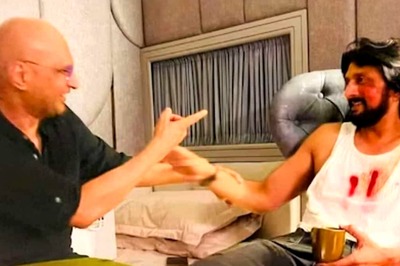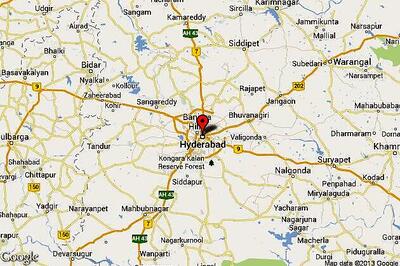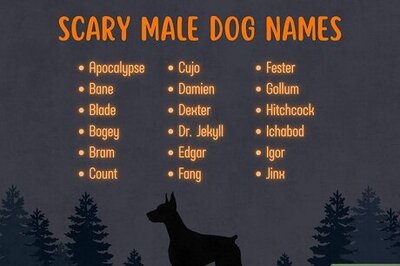
views
It was 1986. As the Halley’s Comet blazed through the dark skies at 2 am, Shomie Ranjan Das, then headmaster of the Lawrence School in Sanawar, Himachal Pradesh, gathered his students around a telescope and evoked a sense of scientific curiosity that would last a lifetime.
The former head of Mayo College, Doon School and the Lawrence School, three of the most prestigious schools in India, and one of the country’s foremost educators who also taught King Charles, died after a brief illness in Hyderabad on Monday. He was 89.
That night 38 years ago was unforgettable, said Rohit S Bajaj, director of Pathways School Gurgaon.
“He gave us coffee and made us watch Halley’s Comet at 2 am in his telescope. After that, a person like me, I just wanted to become a scientist and I wanted to just study astronomy. So he taught us that passion of learning, of asking questions, of knowing. That’s how he was as a teacher,” Bajaj told PTI.
The Halley’s Comet comes once in seven decades and Das clearly didn’t want his students to miss out.
It was Das who sowed the seed of education in him and “changed the destinies of students, teachers and parents”, Bajaj added.
Students and those he mentored in a professional capacity as “headie” remember him as the man who forever provoked them to keep learning.
“As a teacher he would provoke our thinking, he would inspire us to think,” Das said.
Das is survived by two sons, a daughter and hundreds of students that still live by his teachings.
Born on August 28, 1935, Das received his early education at The Doon School, founded by his grandfather Satish Ranjan Das, before graduating from St Xavier’s College of the University of Calcutta and the University of Cambridge.
Das also taught at Gordonstoun School in Scotland in the 1960s where he tutored physics to King Charles, then Prince of Wales.
The revolutionary educationist went on to head Mayo College, Ajmer, from 1969 to 1974 before moving on to the position of headmaster at the Lawrence School, Sanawar, from 1974 till 1988.
Das returned to his alma mater, The Doon School, as headmaster from 1988 till 1995.
Former journalist Tushita Patel, another of Das’ students at the Lawrence School, remembered how the headmaster and his wife Pheroza helped her cope after her father’s death.
“My father died when I was in Class 11. He and his wife Pheroza, who used to be my batik teacher, suffused me with their love and kindness, without making it obvious – I think they felt I needed the attention. Perhaps I did, because that last year in school after my father’s demise could have been hard, but I didn’t feel it at all,” Patel shared in a post on Instagram.
She remembered Das to be “delightfully light and gentle with weaker students” who believed in letting his students “rough it out”.
“He took a bunch of us for a trek to Chandrakhani Pass which turned quite hairy after an avalanche. We were completely unprepared for the snow, ran out of rations, wept, hyperventilated and became pitiful. He kept it all together and let us handle it and let us do our own growing up,” Patel remembered.
In Das’ recent biography, “The Man Who Saw Tomorrow”, edupreneur and author Naga Tummala offers an intimate look inside the mind and journey of the educationist and his thoughts about the education system in India.
A long-time associate and mentee, Tummala writes of how Das encouraged holistic development of children by taking them out of the classroom as much as possible.
“That’s vital, Shomie says, to building physical and physiological strengths and also primes children for a life of activity,” the book reads.
Following the example of German educator Kurt Hahn, who set up a rescue service at Gordonstoun, Das too tried to implement some of these ideas at Doon, including setting up an ambulance service, that he felt helped in building character.
The ambulance was later used to carry out rescue work in villages when an earthquake struck Uttarkashi in 1991.
The service was eventually discontinued.
“Today, these things are considered a waste of time. Principals are under pressure to get the best academic results. Character-building takes a back seat,” Das is quoted as saying in the book.
At Mayo, a few years earlier, Das led a rescue effort with his students during a flood.
“So, off I went with 10 boys and one master in our boats. We did a lot of rescue work, helping people perched on trees, taking them home, feeding them and giving them shelter. Among the boys was a fellow called Anil, who sadly is no more. He was very naughty but I had deliberately chosen him.
“The master had strongly advised me not to take him but he turned out to be the best in the whole group. He volunteered for everything difficult. There was hardly any drinking water. So, Anil would walk a couple of kilometres, often at night, through flooded areas to fetch drinking water. His character came through in that crisis,” Das recalled the instance in the book.




















Comments
0 comment